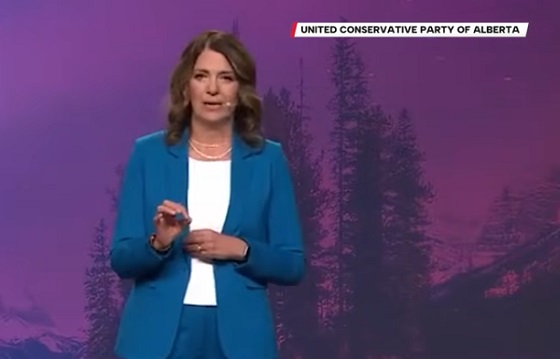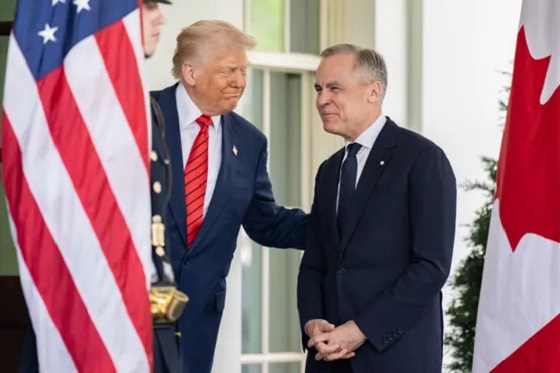2025 Federal Election
Pierre Poilievre Declares War on Red Tape and Liberal Decay in Osoyoos
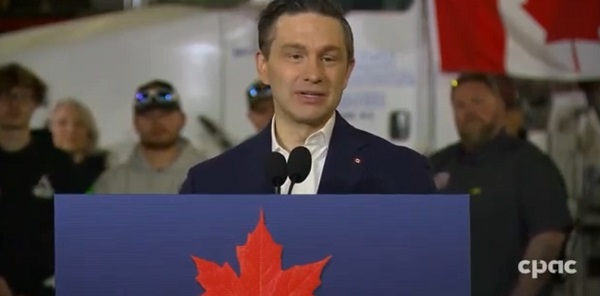

 Dan Knight
Dan Knight
Conservative leader unveils aggressive plan to slash bureaucracy, repeal anti-energy laws, and put “Canada First” after a decade of Liberal stagnation and American dependence.
There was a moment in Osoyoos, British Columbia, this week when you could feel the tectonic plates of Canadian politics shift. Pierre Poilievre didn’t just give a campaign speech—he delivered a declaration of war. Not against a rival party, not against a foreign power, but against the bloated, self-sustaining bureaucracy that has buried this country in red tape, crushed small business, and handed our economic sovereignty to Washington.
And he did it with names, numbers, and fire.
Standing beside Conservative candidates Helena Konanz and Dan Albas—real people with skin in the game—Poilievre laid out the most aggressive anti-regulation, pro-prosperity plan Canada has seen in a generation. This wasn’t “efficiency.” It wasn’t “modernization.” It was a full-scale rollback of the federal state.
A 25% cut to red tape within two years.
A “two-for-one” regulation kill rule: for every new rule, two must die.
A dollar-value offset: $1 of new administrative cost must be matched by $2 in cuts.
And for once, someone’s watching the swamp: the Auditor General will audit compliance.
No tricks. No loopholes. No gluing rulebooks together to fake progress like the Liberals did. Real cuts, enforced in public, with consequences.
Now compare that to what the Liberals have done. Under Justin Trudeau and now Mark Carney, the number of federal rules has exploded—149,000 and counting. That’s 20,000 more than a decade ago, with $51 billion in annual compliance costs for small businesses. It’s not just inefficiency. It’s economic sabotage.
And who benefits from that sabotage? The United States. Poilievre didn’t dance around it—he hit it head-on. President Trump has said he prefers the Liberals in power. Why? Because they’re weak. Because they keep Canadian oil in the ground and Canadian dollars flowing south.
“Trump supports the Liberals because he wants Canada to stay weak,” Poilievre said. “I want the opposite. I want to bring it home.”
The press tried to corner him—tried to paint him as “too Trump-like.” The irony, of course, is that Trump has openly rejected him, because unlike Trudeau and Carney, Poilievre is not for sale.
And then came the attacks on Aaron Gunn. The media paraded misinformation accusations that Gunn denied the impact of residential schools. Poilievre didn’t flinch. He called it out for what it was: misinformation. He defended his candidate. He stood for truth, not Twitter mobs. And he flipped the narrative: if you want prosperity and dignity for First Nations, give them control over resources, revenue, and jobs—not slogans.
Then came the issue of interprovincial trade, where Poilievre again showed he’s living in the real world. Local wineries in the Okanagan are shipping their product to the U.S. because it’s easier than selling across provincial lines. Under the Liberals, it’s harder to trade within Canada than with foreign nations. That’s not a federation—that’s a farce. Poilievre promised to tear down the internal barriers the Laurentian elite have protected for decades.
The CBC? He torched it. Not with culture war talking points, but with precision. It’s become an overfunded, Toronto-centric mouthpiece for the Liberal Party, sucking up $1.5 billion a year to produce less local coverage than ever. Mark Carney just promised another $150 million with no plan to pay for it. Poilievre called it what it is: “a morbidly obese Liberal government—on steroids.”
And he’s right. Carney hasn’t named a single Liberal expenditure he’d reverse. Not one. He’s offering the same broken promises, wrapped in fancier language, from the same corrupt team.
Poilievre, on the other hand, laid out a detailed plan to:
- Eliminate the GST on new homes and Canadian-made cars.
- Cut income taxes by 15%.
- Abolish the capital gains tax on money reinvested in Canada.
- Fast-track LNG projects on the West Coast.
- Repeal every anti-energy, anti-growth law passed by Trudeau’s swamp.
He didn’t ask for permission. He promised results. He’s not trying to manage the decline. He’s here to stop it.
Final Thoughts
I’ve been watching these press conferences like a normal person, which means with my jaw somewhere on the floor. On one side, you’ve got Pierre Poilievre, actually talking about numbers, policies, things that, you know—exist in the real world. On the other side? You’ve got Mark Carney, Trudeau’s old economic braintrust, grinning like a Bond villain, promising to “invest” another $150 million into the CBC—because apparently, $1.5 billion a year isn’t enough to produce wall-to-wall Liberal talking points and a half-hour panel on white fragility.
Carney calls it “public broadcasting.”
Let’s call it what it is: state propaganda—funded by you, weaponized against you.
And this is the guy who’s being sold to Canadians as the adult in the room? The savior? Mark Carney—the guy who’s spent the last decade not in Canada, but lecturing Canadians from London, New York, and climate finance panels in Geneva? He’s not some neutral economist. He’s a gold-plated Davos swamp rat who literally helped engineer the economic disaster we’re now living through—and now he wants to be rewarded with the keys to the kingdom?
This man flew in from Glasgow—no joke—where he was pushing his net-zero snake oil to a bunch of unelected bureaucrats who couldn’t find Fort McMurray on a map if their Tesla battery depended on it. And what’s he proposing now? Keep Bill C-69, the law that strangled Canadian energy, killed pipeline after pipeline, and handed America control over our oil wealth. Keep the law that says: If you want to build anything in this country, you better ask permission from 14 departments and Greta Thunberg’s cousin first.
Oh, and while he’s at it, don’t expect a single dollar of waste to be cut. Not one. Carney hasn’t named a single Liberal program he’d reduce. Not the CBC. Not the bloated bureaucracy. Not even the social engineering schemes buried deep in your child’s classroom.
So let’s spell it out: Mark Carney is Trudeau without the TikTok. Same worldview. Same smugness. Same ideology. Except now he’s dressed it up in Oxford accents and finance jargon and thinks you’re too dumb to notice.
He talks about “fighting climate change,” but never mentions the carbon imports from China. He talks about “building the future,” while propping up the same agencies that couldn’t build a bus stop on time. He talks about “standing up to Trump,” while literally keeping in place the laws that give Trump control over our energy, our jobs, our investment.
And we’re supposed to believe he’s the serious one?
No. What he is—is the avatar of managed decline. The velvet glove of the same iron fist that’s been throttling Canadian prosperity for ten years. Poilievre sees it, and he’s naming it. That’s why the media hate him. That’s why the Liberals fear him. And that’s why Donald Trump doesn’t want him elected—because he won’t roll over like Carney will.
So again—this is not a normal election. It’s not Liberal vs. Conservative. It’s not progressive vs. populist. It’s elite decay vs. national revival.
Poilievre doesn’t want to “manage” this slow-motion collapse. He wants to rip the duct tape off the pipes, shut down the bureaucracy, and start building again. He didn’t ask for permission. He didn’t host a panel. He promised results.
And when he says “Canada First,” it’s not some borrowed slogan. It’s a warning to the swamp: Your time is up.
Carney is decline dressed as competence.
Poilievre is the first sign of life this country has had in a decade.
So yeah, Pierre Poilievre chose defiance.
Now it’s your turn.
Subscribe to The Opposition with Dan Knight .
For the full experience, upgrade your subscription.
2025 Federal Election
Protestor Behind ‘Longest Ballot’ Chaos targeting Poilievre pontificates to Commons Committee
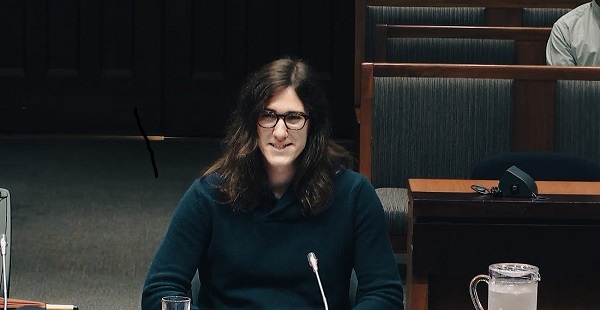
Lawmakers confront organizer Tomas Szuchewycz for flooding ridings with placeholder candidates, targeting Pierre Poilievre’s seat, and wasting public resources.
Szuchewycz’s most notorious move came in Carleton — the riding of Conservative Leader Pierre Poilievre, where the ballot swelled to 91 names, stretching nearly a metre and forcing Elections Canada to redesign how it printed and handled the vote. The LBC framed the stunt as a protest against Canada’s first-past-the-post electoral system. But to most voters, it looked nothing like a principled reform campaign. What they saw was an effort aimed squarely at Poilievre, meant to bury his name among a wall of nobodies and turn the vote into a farce.
Elections Canada had to scramble to manage the chaos: printing extra‑long ballots, re‑training workers, and creating a last‑minute write‑in workaround in Battle River–Crowfoot to keep ballots usable. Seniors and disabled voters complained about the physical size and complexity of the ballot; poll workers faced new logistical headaches; public money was wasted.
At Tuesday’s hearing, Szuchewycz showed no contrition and offered no practical alternative to the system he had tried to upend. Instead, he accused MPs of having a “conflict of interest” in writing election law and demanded that power be handed to an undefined “permanent, non‑partisan body” — without explaining who would select it, how it would operate, or how it would be accountable to Canadians.
The LBC, whose actions led to metre-long ballots in ridings like Carleton (91 candidates) and Battle River–Crowfoot (86), claims to oppose Canada’s first-past-the-post system. But when asked how his proposed independent reform body would be formed, selected, or held accountable, Szuchewycz had no answers.
Conservative MP Michael Cooper led the charge, accusing Szuchewycz of overseeing a signature-harvesting scheme that involved electors signing blank nomination forms—potentially in violation of the Canada Elections Act. He tabled a January 2024 tweet and an August 2024 YouTube video showing organizers gathering signatures under the claim that candidate names would be “filled in later.”
Szuchewycz denied the accusation, claiming nomination papers had either candidate names or the phrase “all candidates” filled in. But when he tried to discredit Cooper’s evidence by calling it “AI-generated,” the committee chair issued a warning for casting doubt on the authenticity of a Member’s documents without basis. The comment was withdrawn under pressure.
Still, Cooper was unsatisfied, warning Szuchewycz that misleading Parliament could amount to contempt.
Other witnesses—experts and former elected officials—were equally critical of the LBC’s tactics. Dr. Lori Turnbull, a professor at Dalhousie University, called the stunt “undesirable” and a “waste of resources,” though she praised Elections Canada for adapting quickly by allowing a write-in workaround in Battle River–Crowfoot to avoid printing a literal wall of names.
Professor Peter Loewen of Cornell University added that the LBC’s ballot-stuffing “violates the spirit” of competitive democracy and burdens front-line elections staff with unnecessary logistical chaos. He warned that a third-party group acting like a political party without oversight was a loophole that needed closing.
Meanwhile, former Liberal MP Louis-Philippe Sauvé described the real-world toll of the stunt: longer lineups, stressed poll workers, and accessibility hurdles for elderly and visually impaired voters.
In stark contrast to these grounded critiques, Szuchewycz’s testimony revolved around vague accusations of “conflict of interest” by MPs and a call to remove Parliament from electoral reform altogether. No constitutional roadmap. No governance model. No practical enforcement mechanism.
At the end of the day, what Tomas Szuchewycz has done isn’t just a stunt, it’s an insult. He claims Canadians “know what he’s protesting,” but let’s be honest: most voters had no clue this was about electoral reform. What they saw was a campaign to flood ballots with nonsense names in key ridings, especially against the Leader of the Opposition, and create chaos for chaos’s sake.
The takeaway wasn’t a conversation about democracy. It was a spectacle, and one that mocked the very voters he pretends to represent. Lets be clear, This wasn’t activism, it was ego masquerading as principle. And it reeked of entitlement.
Tomas Szuchewycz is the embodiment of unchecked privilege: a man who hijacked our electoral process, wasted taxpayer dollars, and offered nothing in return but smug contempt for the very democracy that gave him the space to pull his stunt.
He claims Canadians understood his message. They didn’t. Most people saw a confusing mess, an attack on the Opposition Leader, and a joke made at the expense of voters, poll workers, and the electoral system itself.
So yes — reform is coming. And it can’t come soon enough.
Parliament must not just close the loopholes it should make sure that when someone deliberately sabotages the integrity of an election, they are held accountable, including being forced to repay the public for the cost of their chaos.
Because in a democracy, you have the right to protest.
But not the right to turn an election into a farce on the public’s dime.
Subscribe to The Opposition with Dan Knight
Invite your friends and earn rewards
2025 Federal Election
Post election report indicates Canadian elections are becoming harder to secure
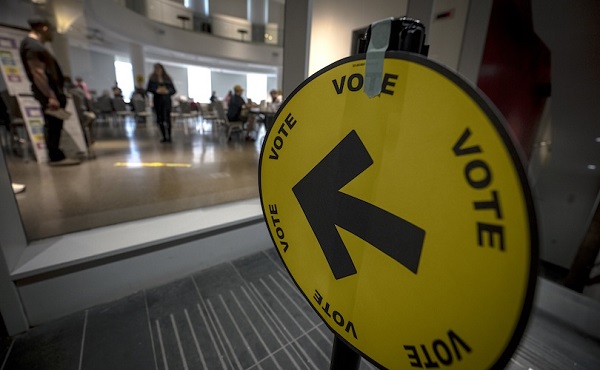
Chief Electoral Officer Stéphane Perrault highlights strong participation and secure voting, but admits minority politics, rising costs, and administrative pressures are testing the system’s limits.
Monday in Ottawa, Stéphane Perrault, Canada’s Chief Electoral Officer, delivered a long press conference on April’s federal election. It was supposed to be a victory lap, record turnout, record early voting, a secure process. But if you listened closely, you heard something else: an admission that Canada’s election machinery is faltering, stretched thin by a system politicians refuse to fix.
Perrault touted the highest turnout in 30 years, 69 percent of eligible voters, nearly 20 million Canadians. Almost half of those ballots were cast before election day, a dramatic shift in how citizens take part in democracy.
“Twenty years ago, less than 7% voted early. This year, nearly half did,” Perrault told reporters. “Our system may have reached its limit.”
That’s the core problem. The system was built for one decisive day, not weeks of advance voting spread across campuses, long-term care homes, mail-in ballots, and local Elections Canada offices. It’s no longer a single event; it’s an extended process that stretches the capacity of staff, polling locations, and administration.
Perrault admitted bluntly that the 36-day writ period, the time between when an election is called and when the vote happens, may no longer be workable. “If we don’t have a fixed date election, the current time frame does not allow for the kind of service preparations that is required,” he said.
And this is where politics collides with logistics. Canada is once again under a minority government, which means an election can be triggered at almost any moment. A non-confidence vote in the House of Commons, where opposition parties withdraw support from the government, can bring down Parliament in an instant. That’s not a flaw in the system; it’s how parliamentary democracy works. But it leaves Elections Canada on permanent standby, forced to prepare for a snap election without knowing when the writ will drop.
The result? Sixty percent of voter information cards were mailed late this year because Elections Canada couldn’t finalize leases for polling stations on time. Imagine that, more than half the country got their voting information delayed because the system is clogged. And that’s when everything is supposedly working.
The April election cost an estimated $570 million, almost identical to 2021 in today’s dollars. But here’s the kicker: Elections Canada also spent $203 million just to stay ready during three years of minority Parliament. That’s not democracy on the cheap. That’s bureaucracy on retainer.
Perrault admitted as much: “We had a much longer readiness period. That’s the reality of minority governments.”
No Foreign Interference… But Plenty of ‘Misinformation’
Canada’s top election official wanted to make something perfectly clear: “There were no acts of foreign interference targeting the administration of the electoral process.” That’s the line. And it’s a good one… reassuring, simple, the kind of phrase meant to make headlines and calm nerves.
But listen closely to the wording. He didn’t say there was no interference at all. He said none of it targeted the administration of the vote. Which raises the obvious question: what interference did occur, and who was behind it?
Perrault admitted there was “more volume than ever” of misinformation circulating during the 2025 election. He listed the greatest hits: rumors that Elections Canada gives voters pencils so ballots can be erased, or claims that non-citizens were voting. These are hardly new — they’ve appeared in the U.S. and in Europe too. The difference, he said, is scale. In 2025, Canadians saw those narratives across more channels, more platforms, more communities than ever before.
This is where things get interesting. Because the way Perrault framed it wasn’t that a rogue actor or a foreign intelligence service was pushing disinformation. He was blunt: this was a domestic problem as much as anything else. In his words, “whether foreign or not,” manipulation of information poses the “single biggest risk to our democracy.”
Perrault insists the real danger isn’t foreign hackers or ballot-stuffing but Canadians themselves, ordinary people raising questions online. “Information manipulation, whether foreign or not, poses the single biggest risk to our democracy,” he said.
Well, maybe he should look in the mirror. If Canadians are skeptical of the system, maybe it’s because the people running it haven’t done enough to earn their trust. It took years for Ottawa to even acknowledge the obvious , that foreign actors were meddling in our politics long before this election. Endless commissions and closed-door reports later, we’re told to stop asking questions and accept that everything is secure.
Meanwhile, what gets fast-tracked? Not a comprehensive fix to protect our democracy, but a criminal investigation into a journalist. Keean Bexte, co-founder of JUNO News, is facing prosecution under Section 91(1) of the Canada Elections Act for his reporting on allegations against Liberal candidate Thomas Keeper. The maximum penalty? A $50,000 fine and up to five years in prison. His reporting, incidentally, was sourced, corroborated, and so credible that the Liberal Party quietly dropped Keeper from its candidate list.
If people doubt the system, it isn’t because they’re gullible or “misinformed.” It’s because the government has treated transparency as an afterthought and accountability as an inconvenience. And Perrault knows it. Canadians aren’t children to be scolded for asking questions, they’re citizens who expect straight answers.
But instead of fixing the cracks in the system, Ottawa points the finger at the public. Instead of rebuilding trust, they prosecute journalists.
You don’t restore faith in democracy by threatening reporters with five years in prison. You do it by showing, quickly and openly, that elections are beyond reproach. Until then, spare us the lectures about “misinformation.” Canadians can see exactly where the problem lies, and it isn’t with them.
The Takeaway
Of course, they’re patting themselves on the back. Record turnout, no servers hacked, the trains ran mostly on time. Fine. But what they don’t want to admit is that the system barely held together. It was propped up by 230,000 temporary workers, leases signed at the last minute, and hundreds of millions spent just to keep the lights on. That’s not stability. That’s triage.
And then there’s the lecturing tone. Perrault tells us the real threat isn’t incompetence in Ottawa, it’s you, Canadians “sharing misinformation.” Excuse me? Canadians asking questions about their elections aren’t a threat to democracy, they are democracy. If the government can’t handle people poking holes in its story, maybe the problem isn’t the questions, maybe it’s the answers.
So yes, on paper, the 2025 election looked like a triumph. But listen closely and you hear the sound of a system cracking under pressure, led by officials more interested in controlling the narrative than earning your trust. And when the people running your elections think the real danger is the voters themselves? That’s when you know the elastic isn’t just stretched. It’s about to snap.
Subscribe to The Opposition with Dan Knight .
For the full experience, upgrade your subscription.
-
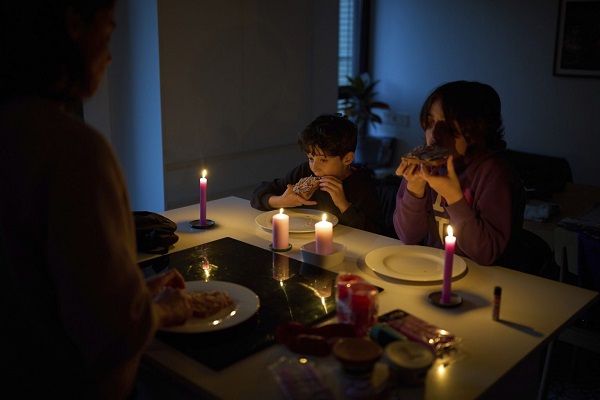
 Energy1 day ago
Energy1 day agoCanada following Europe’s stumble by ignoring energy reality
-

 International15 hours ago
International15 hours agoFBI may have finally nabbed the Jan. 6 pipe bomber
-

 Business1 day ago
Business1 day agoCanada’s climate agenda hit business hard but barely cut emissions
-

 COVID-199 hours ago
COVID-199 hours agoUniversity of Colorado will pay $10 million to staff, students for trying to force them to take COVID shots
-

 MAiD2 days ago
MAiD2 days agoFrom Exception to Routine. Why Canada’s State-Assisted Suicide Regime Demands a Human-Rights Review
-

 espionage15 hours ago
espionage15 hours agoDigital messages reportedly allege Chinese police targeted dissident who died suspiciously near Vancouver
-

 Business2 days ago
Business2 days agoCarney government should privatize airports—then open airline industry to competition
-
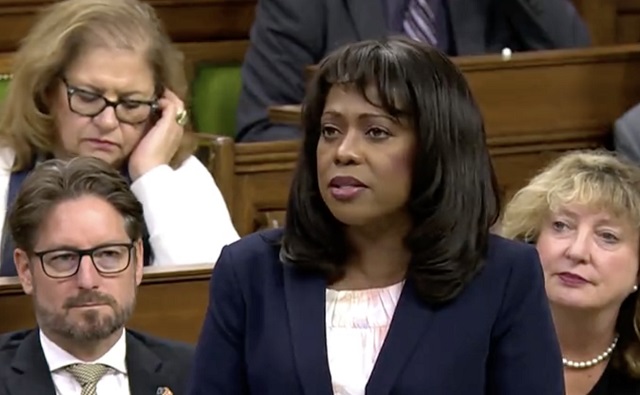
 Censorship Industrial Complex1 day ago
Censorship Industrial Complex1 day agoConservative MP Leslyn Lewis slams Liberal plan targeting religious exemption in hate speech bil






